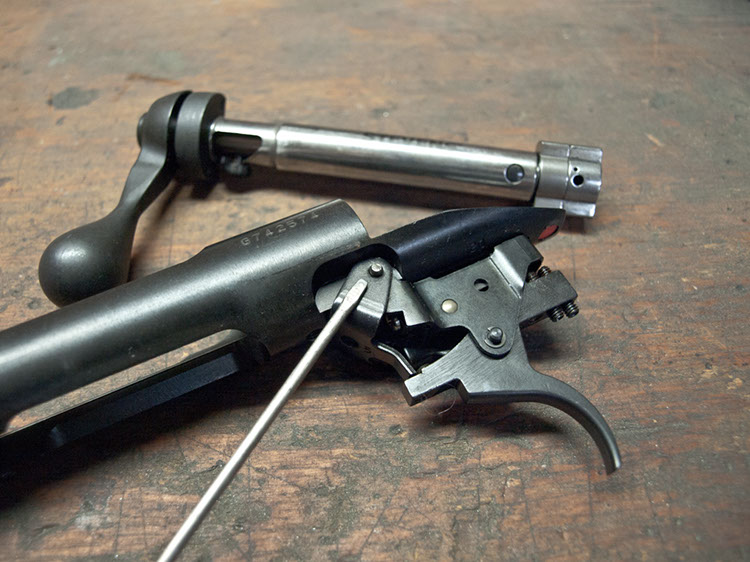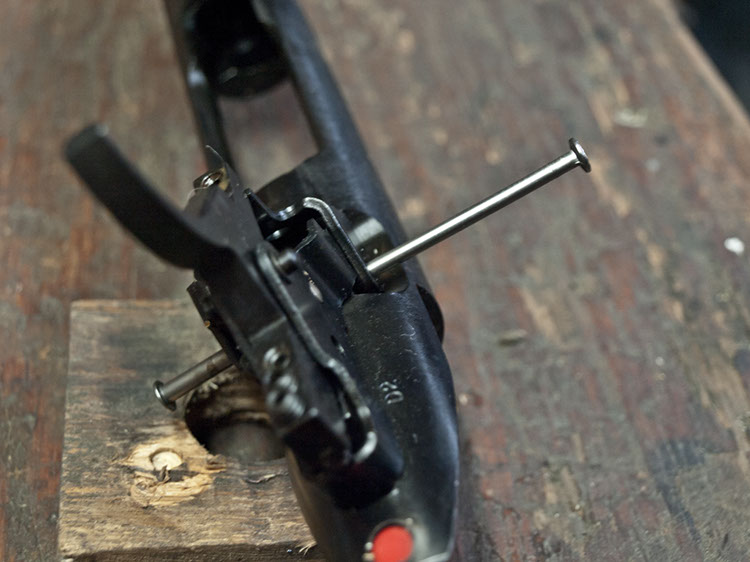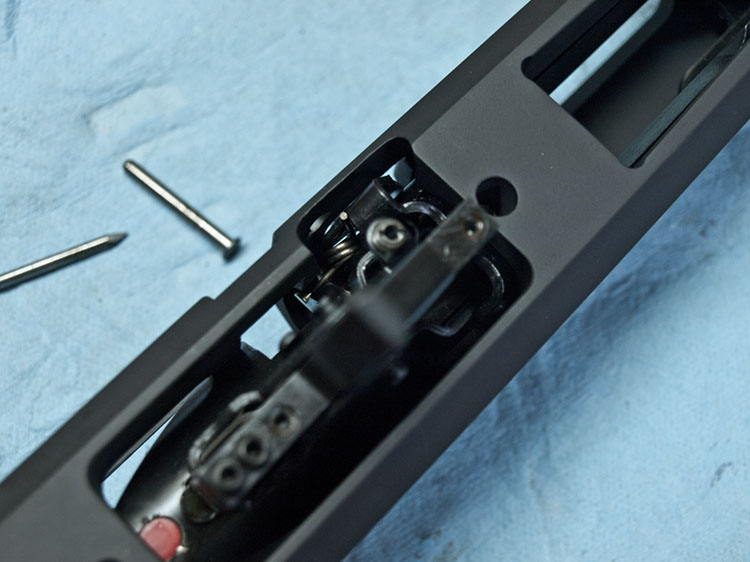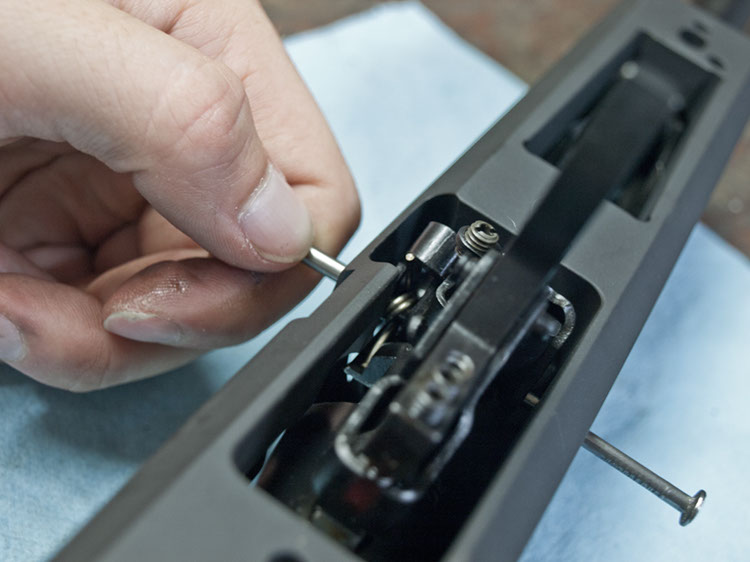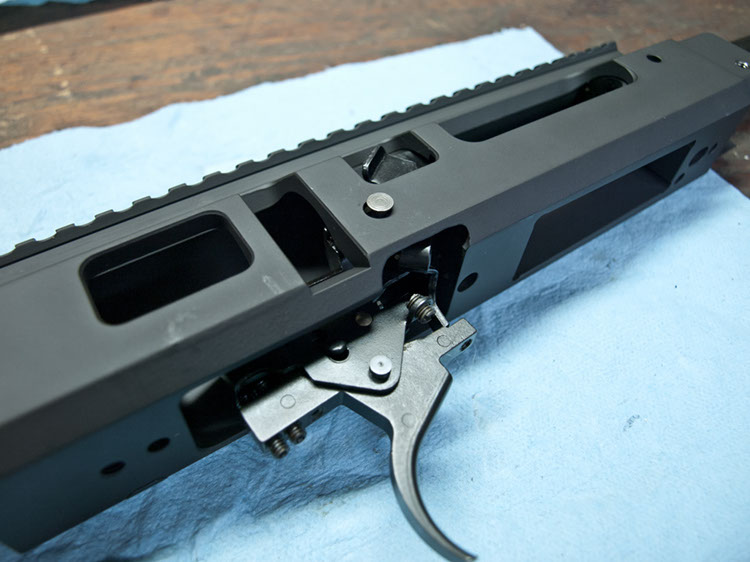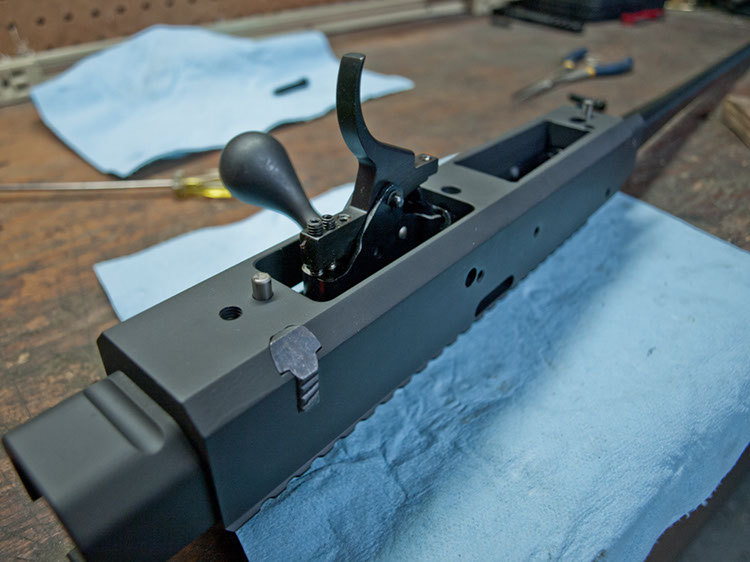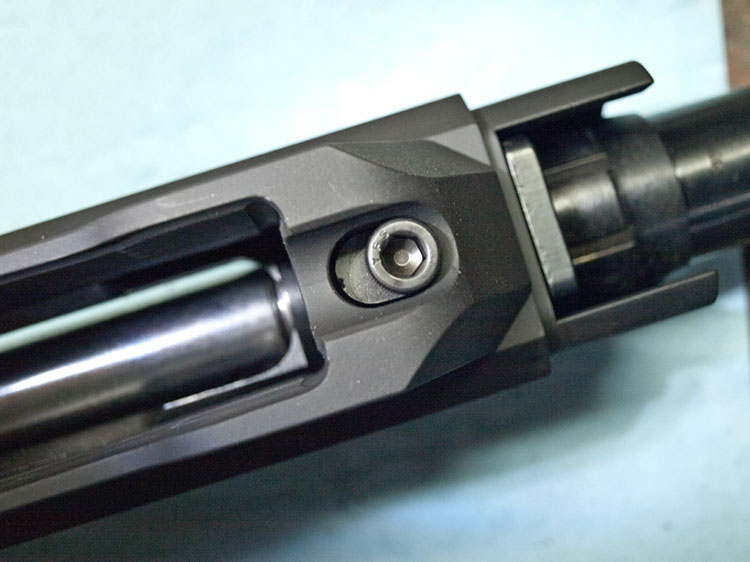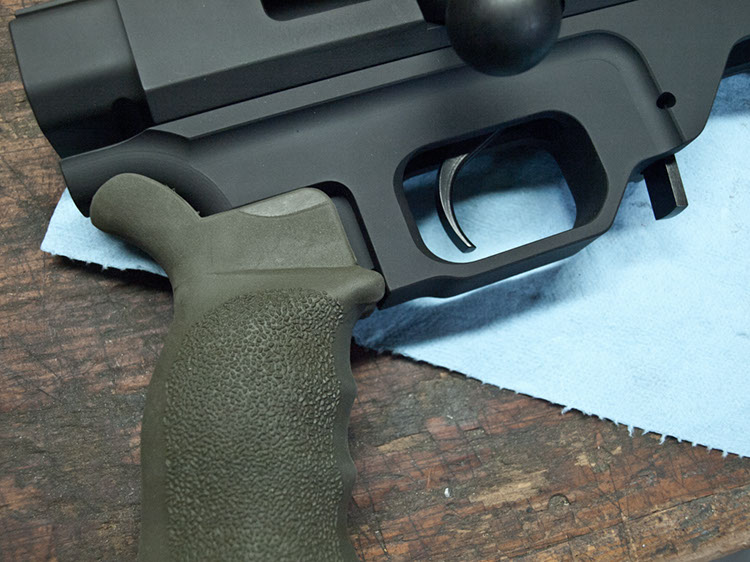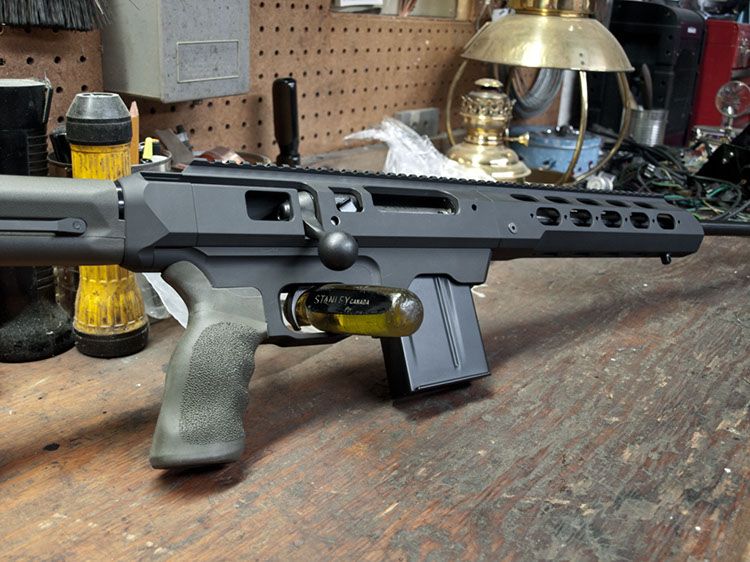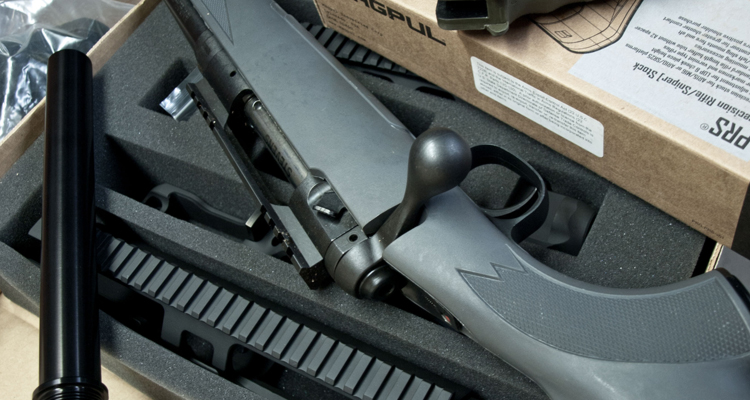
While we here at Calibre are obviously appreciative of the opportunities this unique job grants, we haven't forgotten what it's like to nurture a penchant for fine firearms on an SKS budget. And unless Time or Newsweek suddenly expresses an interest in purchasing this particular Canadian gun magazine, that's not liable to change, either. Because while we may punch a slightly different clock than most, we here at the Calibre offices remain regular old working stiffs, and our own personal approach to firearm procurement (or rather, the lack thereof) reflects that... at least, we think it would, if our significant others would allow us to actually buy any new guns.
But while our pitiful bank accounts may restrict us from entering the heady world of fine or exotic gun ownership, even we can afford to spend a few hundred bucks on the hobby now and again, and more often than not we spend that money modifying, accessorizing, or otherwise building one of our pedestrian rifles into something that we feel more strongly about. However, if there's one style of rifle that has historically eschewed our piecemeal approach to gun-building, it's been the long-range precision rifle.
And here's why: gunsmithing time. Requiring incredible attention to detail and the use of such dark arts as action truing, barrel fitting, lug lapping, action bedding, and chamber cutting, building an accurate rifle used to be something that simply couldn't be done outside the walls of a gunsmith's shop. But, with OEM manufacturing tolerances growing ever smaller, and aftermarket manufacturers recognizing a growing demand for modular design, with each passing year it grows ever easier to build a long-rang precision rifle entirely at home. So, we thought it was about time to give it a try.
The first order of business, obviously, was to purchase a rifle. And after perusing the various used gun listings, we found this plain-jane Stevens 200 on gunownersofcanada.ca, with a listed price of $350. Advertised as a .308 fitted with a very nice Farrell mount and an oversized bolt handle, it seemed perfect for our needs, as .308 was the very cham
bering we were looking for, and both the mount and bolt handle were additions we were intent on making. So, one quick email money transfer and one slightly less quick Canada Post shipment later, we were happy to call it our own.
Now, we should mention that the Stevens 200 we bought wasn't selected merely out of convenience. No, we had already decided on a Savage action as we've long been fans of Savage's floating bolt head design that precludes any need to lap the lugs, and we also knew we'd want to replace the barrel at home, making Savage's locknut-style of barrel retention vastly more appealing than that of the Remington 700, which requires machine work, and thus, a gunsmith's time. Furthermore, since this was to be a project rifle, we were quite intent on replacing the trigger mechanism, which meant we had no need for a Savage rifle outfitted with their admittedly excellent Accutrigger system. And when you are looking for a cheap Savage action without an Accutrigger, what you really want is a Stevens 200; an older-style Savage action fitted with a standard trigger, all finished to what can be complimentarily called a "wallet-friendly sheen." In short, it's a solid action, stuck in an ugly plastic stock, with a pretty poor blued finish and a bog-standard trigger. That we happened across one with a couple of crucial bits already attached was just dumb luck.
So, with the rifle now accounted for, it was time to purchase one of the single most important parts of the precision-rifle puzzle: a new stock. Floppy, flimsy, and generally crappy-feeling, the plastic Stevens stock may be perfectly serviceable as a hunting stock, but it's certainly not something that one gazes upon with a sense of pride and it definitely doesn't boast any of the features we'd need in our long-range precision rifle. And thankfully, after taking stock (pun very much intended) of the offerings currently available on the market, our replacement seemed quite obvious: the Modular Driven Technologies TAC21. Why? Because just like the user-friendly, user-serviceable Savage action we'd selected, the MDT TAC21 chassis system too requires no gunsmithing time, while offering true chassis-level features at a gunstock price. What we mean by that is that the TAC21 locates the action in-line with the stock, as a good chassis should, and includes a detachable magazine system and a full complement of rail space, all at a price point that is either comparable or better than that of the various popular aftermarket stock and bottom metal combinations. And that it's Canadian-made just sealed the deal.
So in this, Part 1 of an as-yet unknown amount of parts, we outline the various steps involved in taking our new bone-stock Stevens 200, and installing it into the TAC21 chassis. Thereafter, we'd intended to take it to the range to test its accuracy, but were unable to do so as we found a couple issues with the rifle throughout the installation process... as one is wont to do with any used gun. First off, the stock trigger had been modified in such a way that the safety no longer functioned when installed in the TAC21 chassis, and as such will have to be replaced. But more importantly, we discovered that while the rifle had been advertised as a .308 Winchester, what actually arrived in our mailbox a week after we bought it was chambered in .243 Winchester, and we didn't have the opportunity to work up a .243 Winchester load before press deadline.

